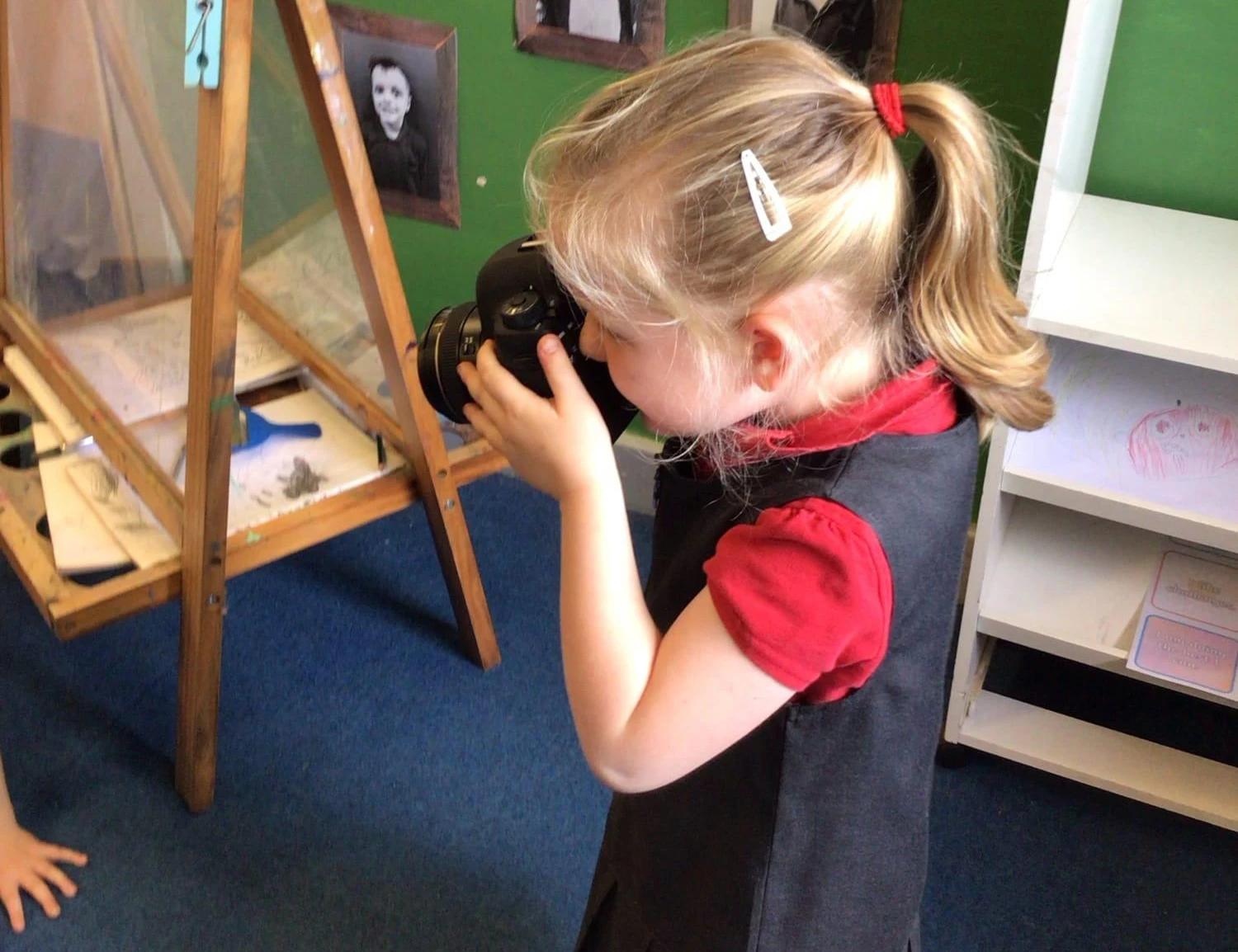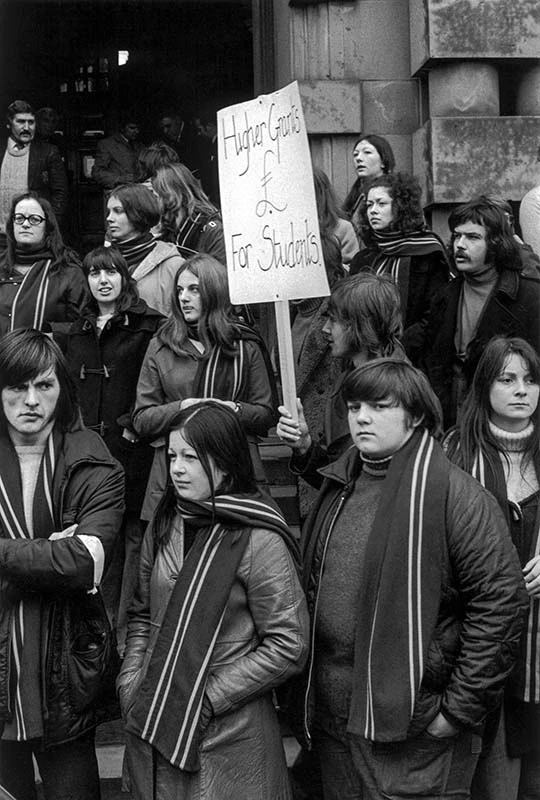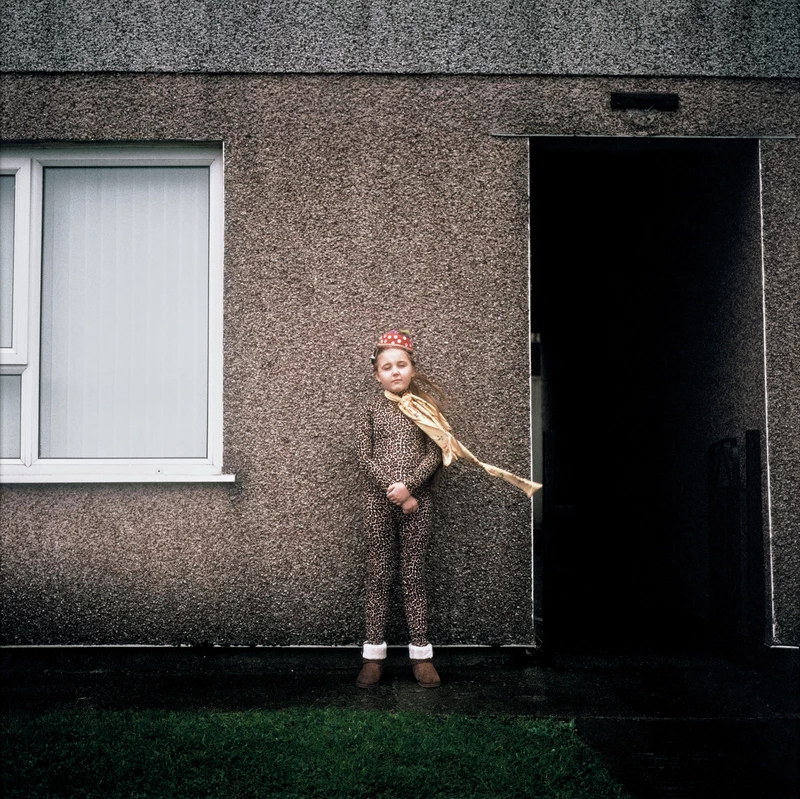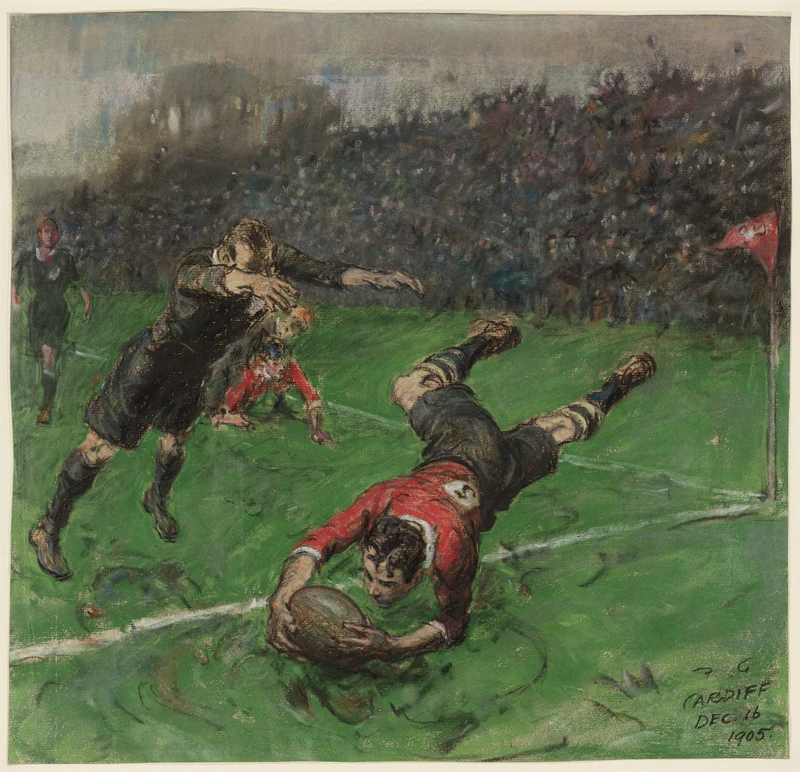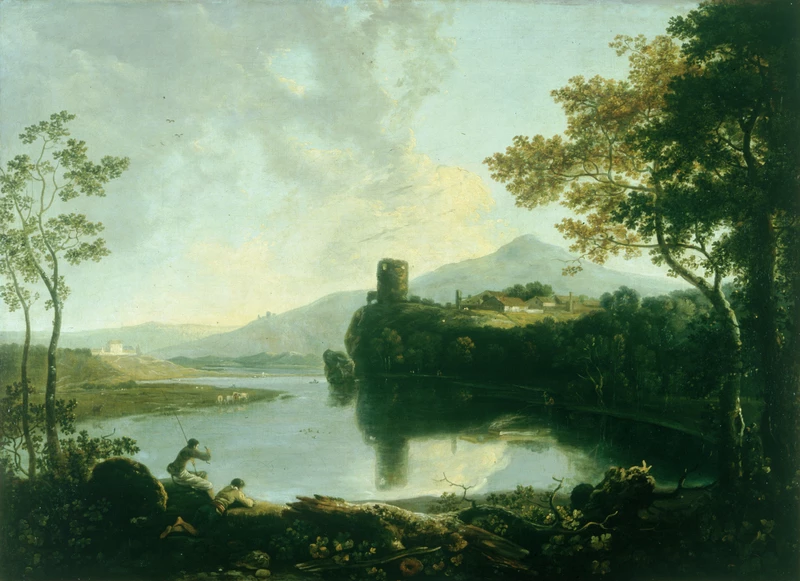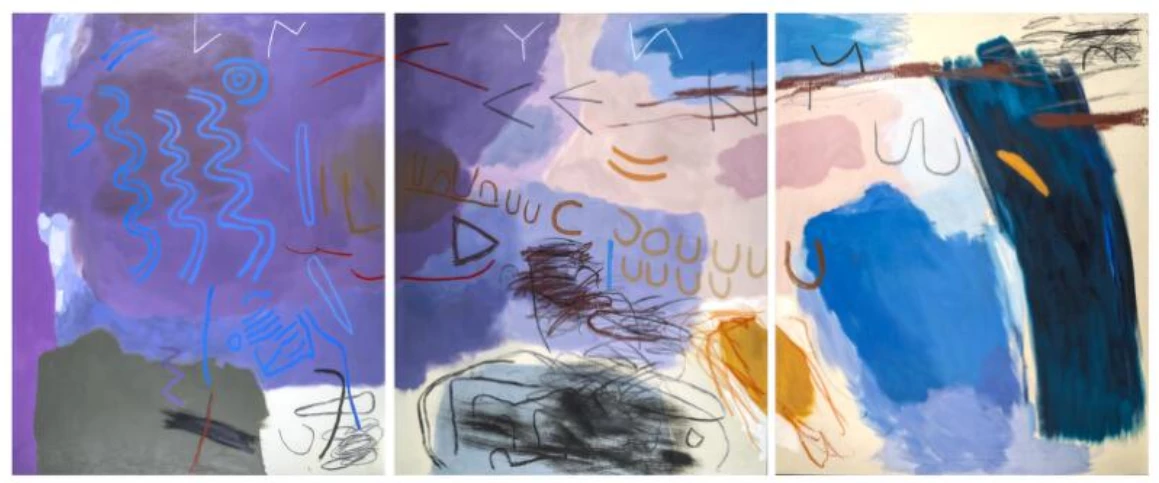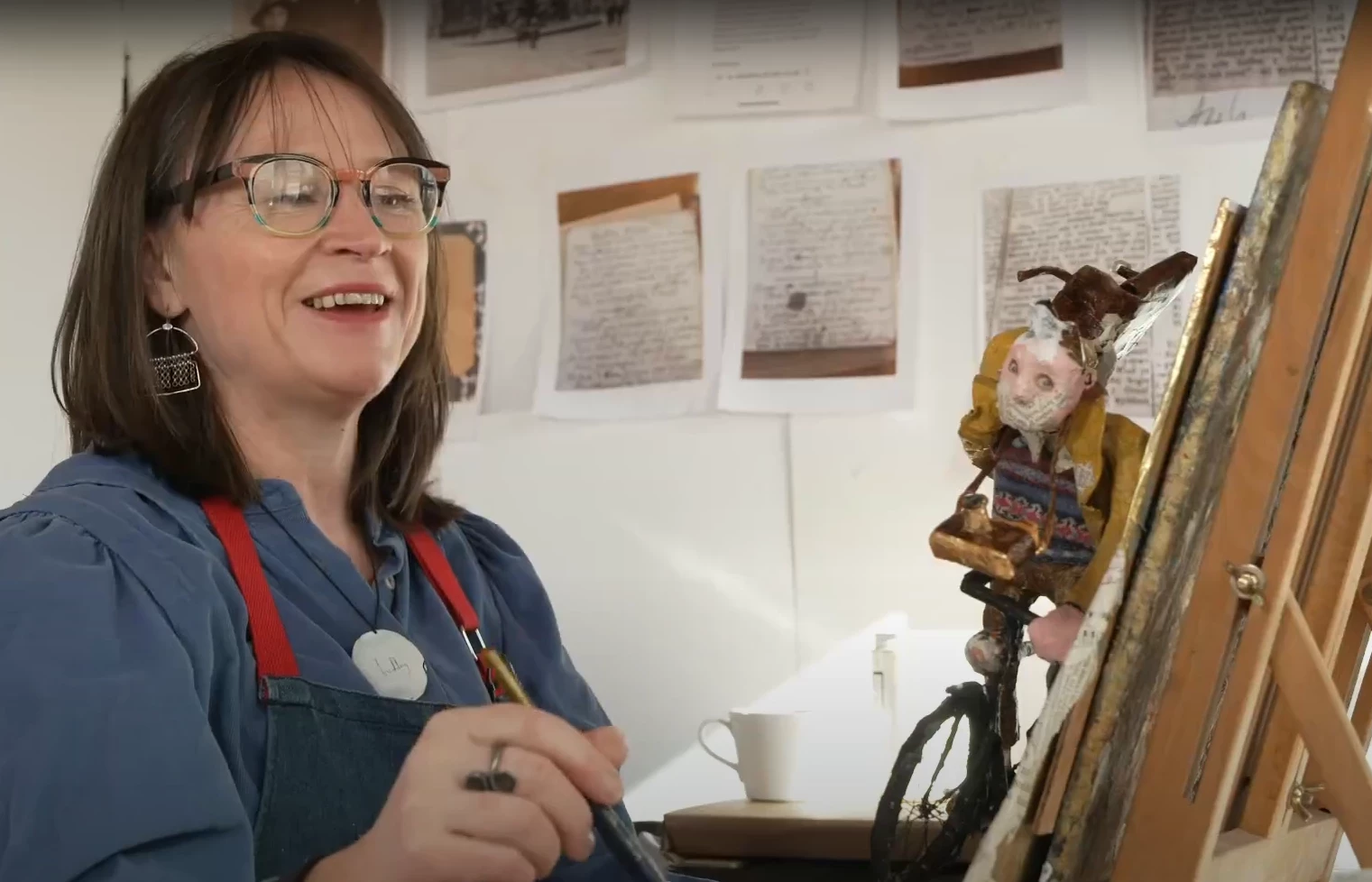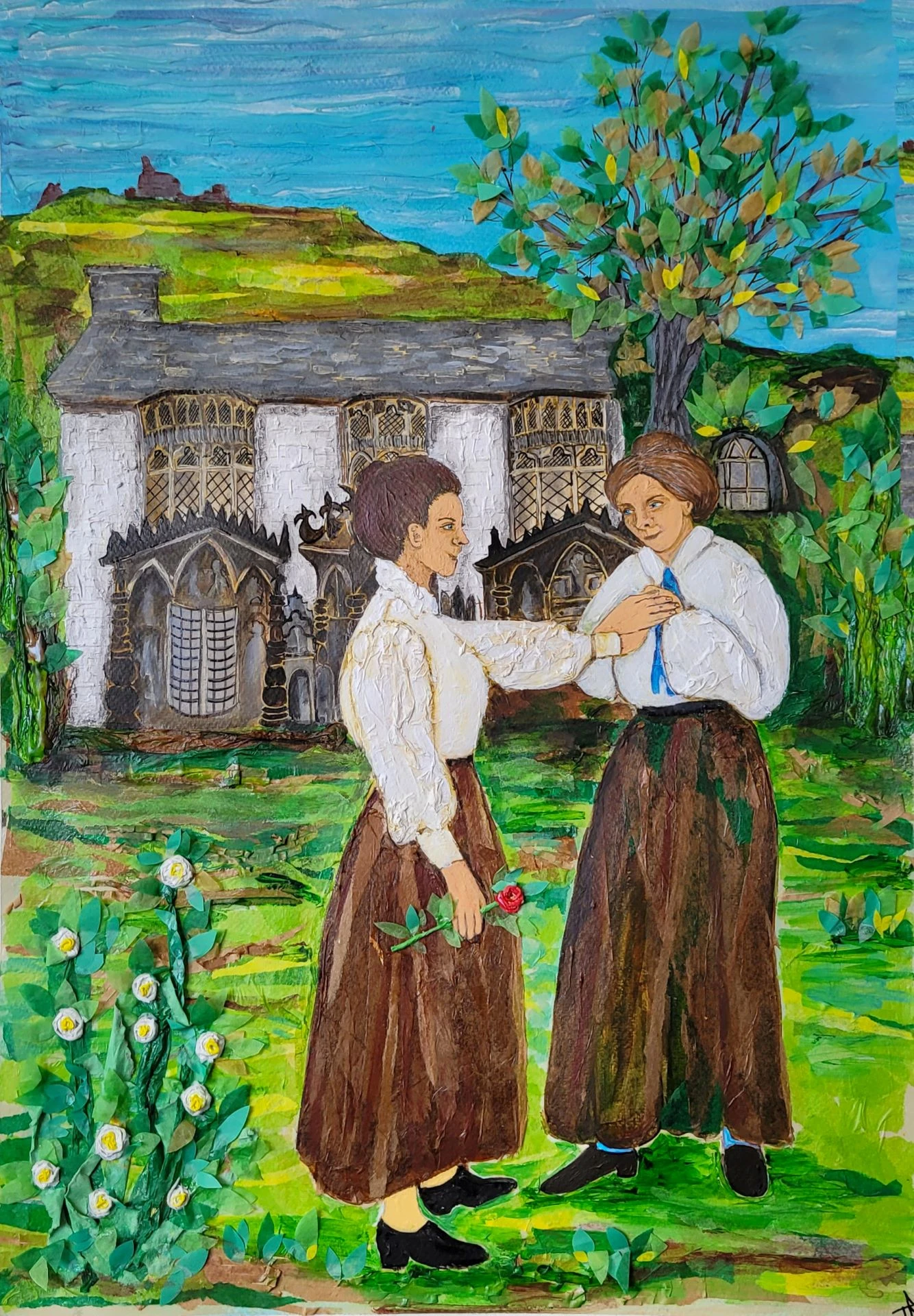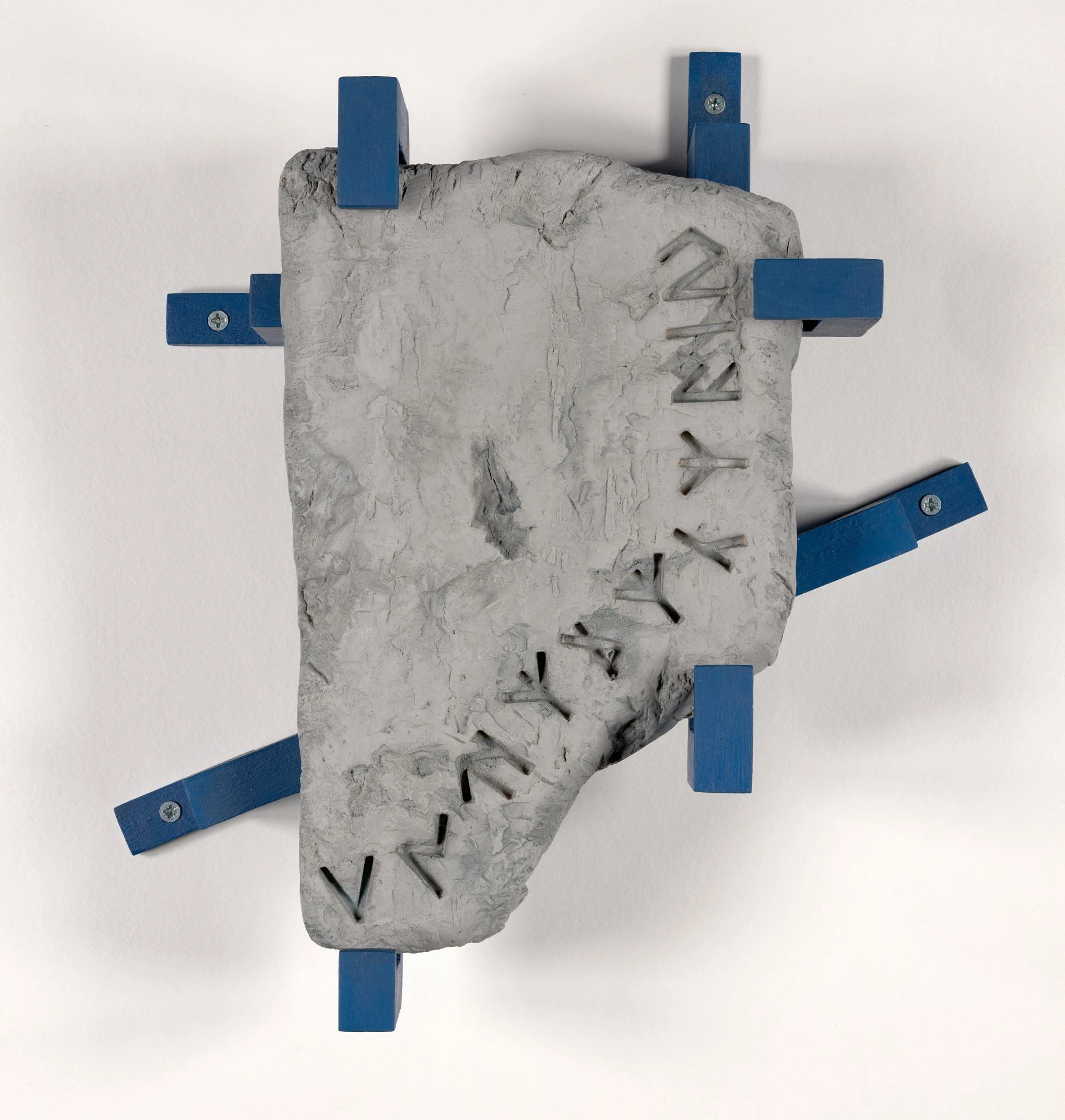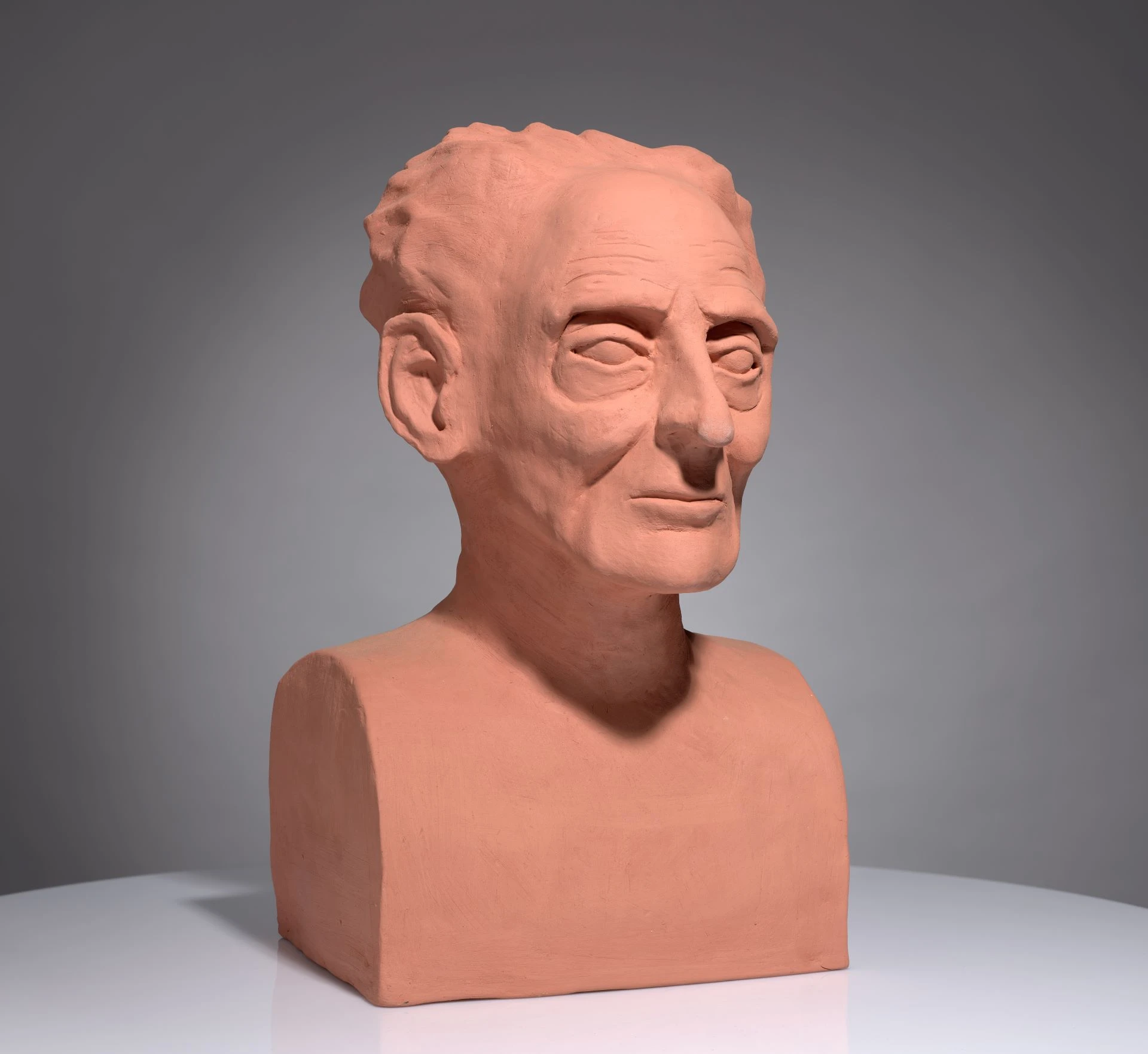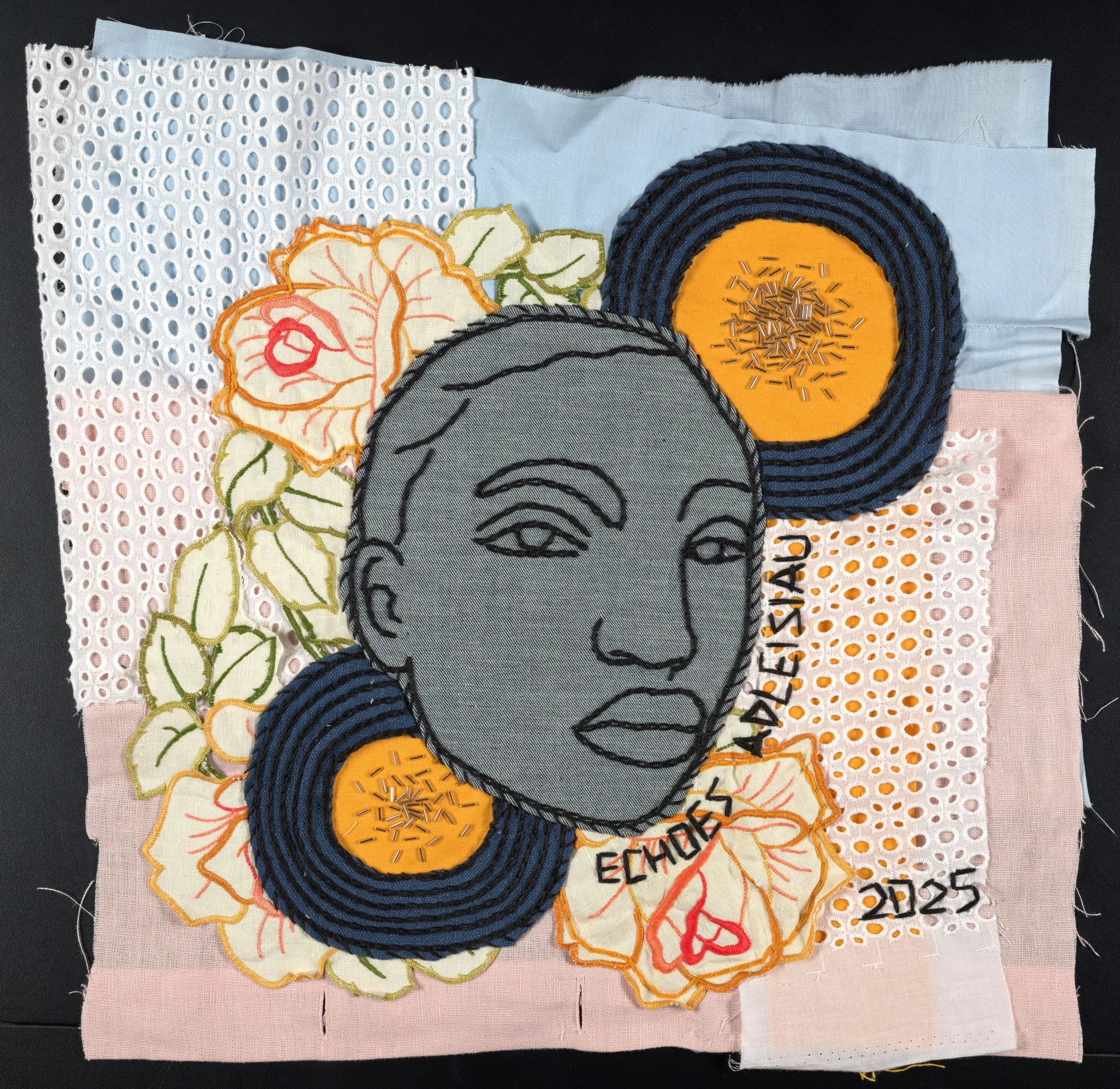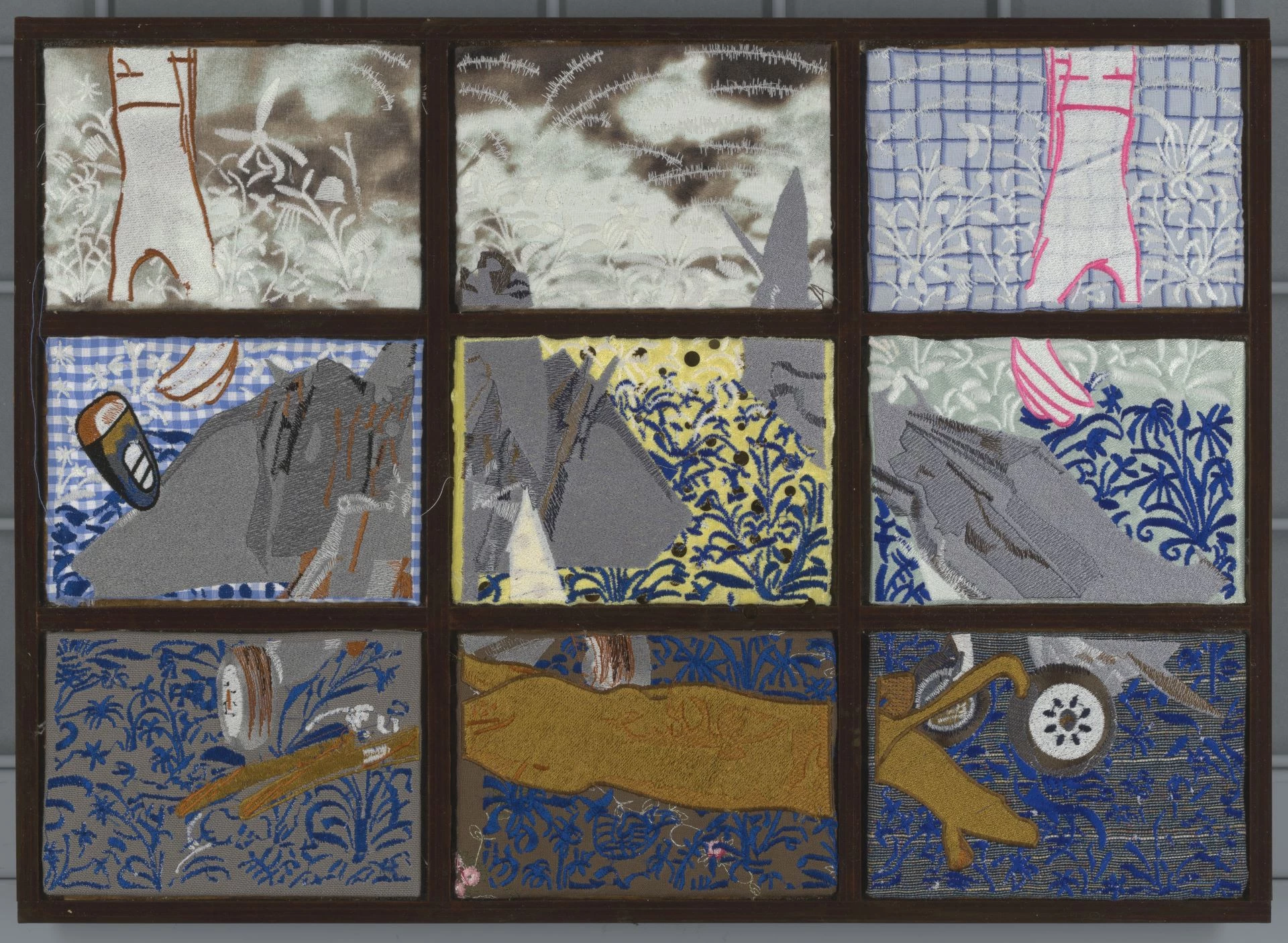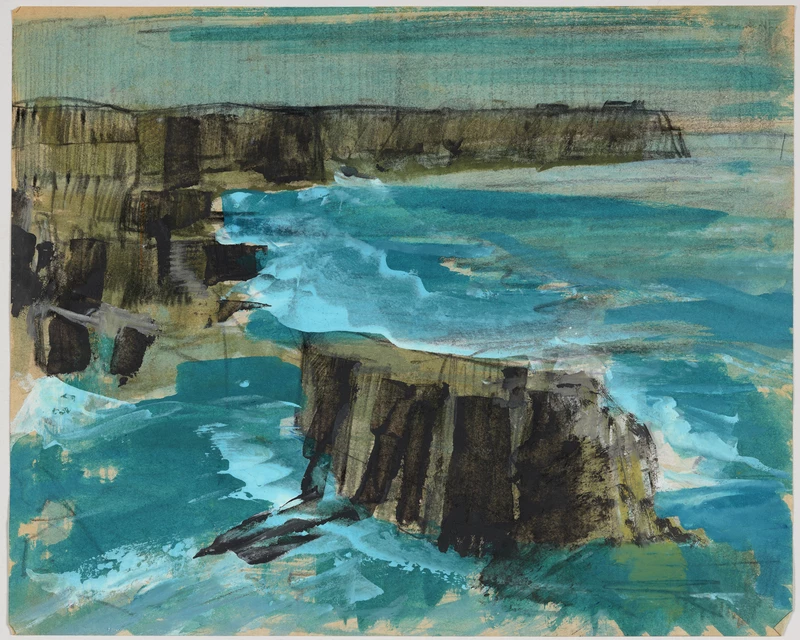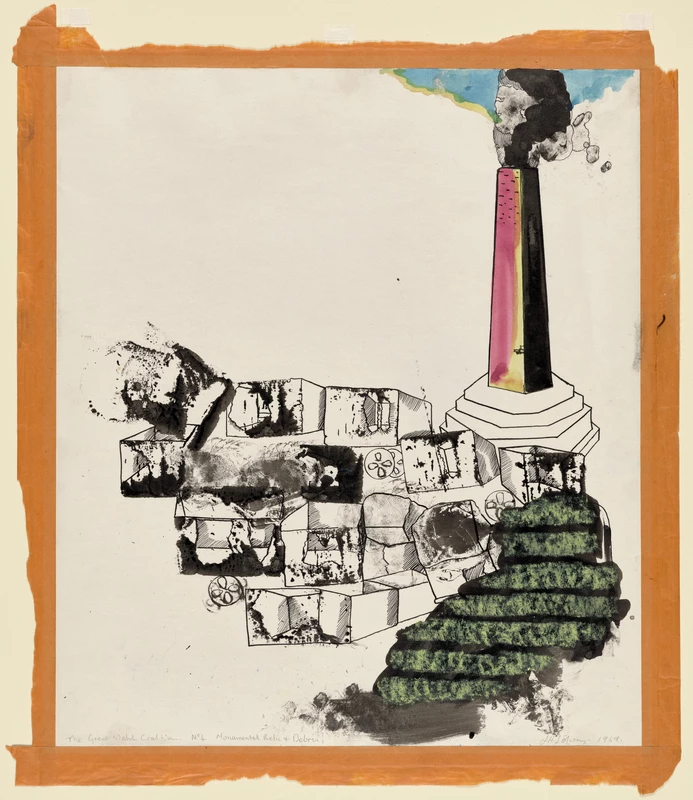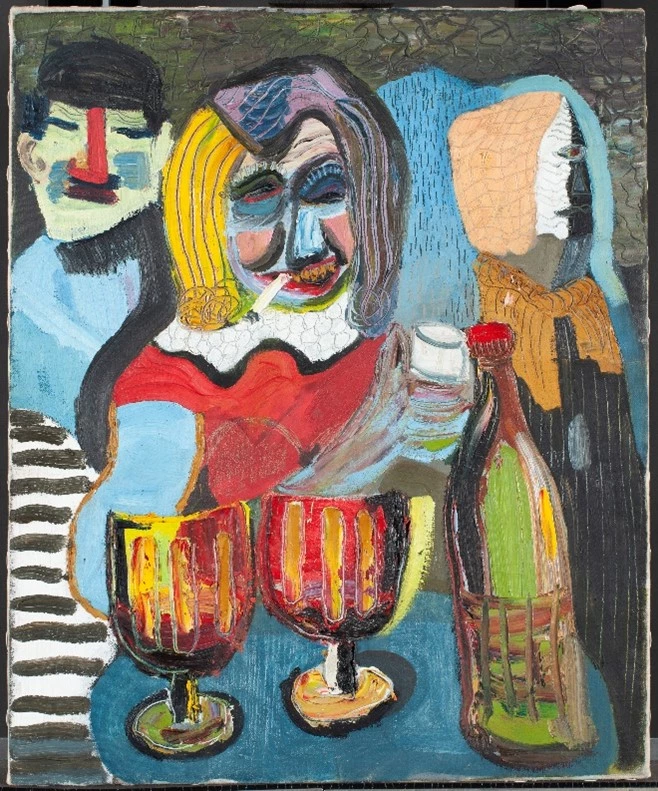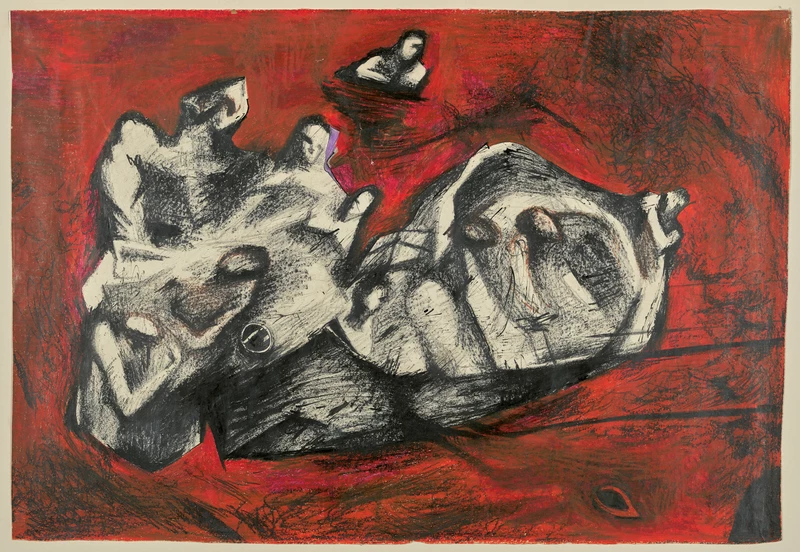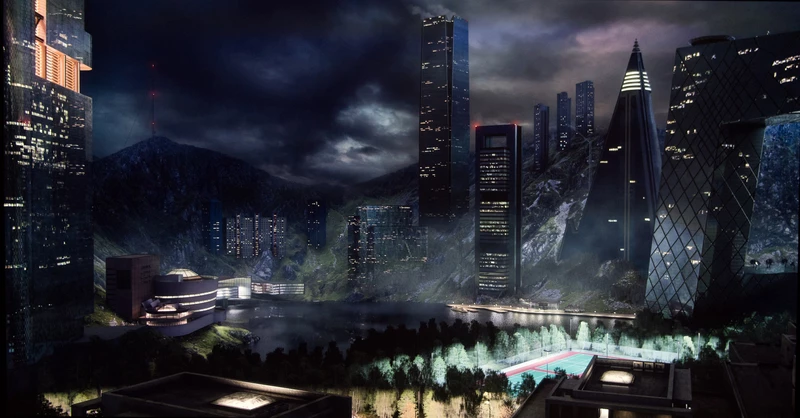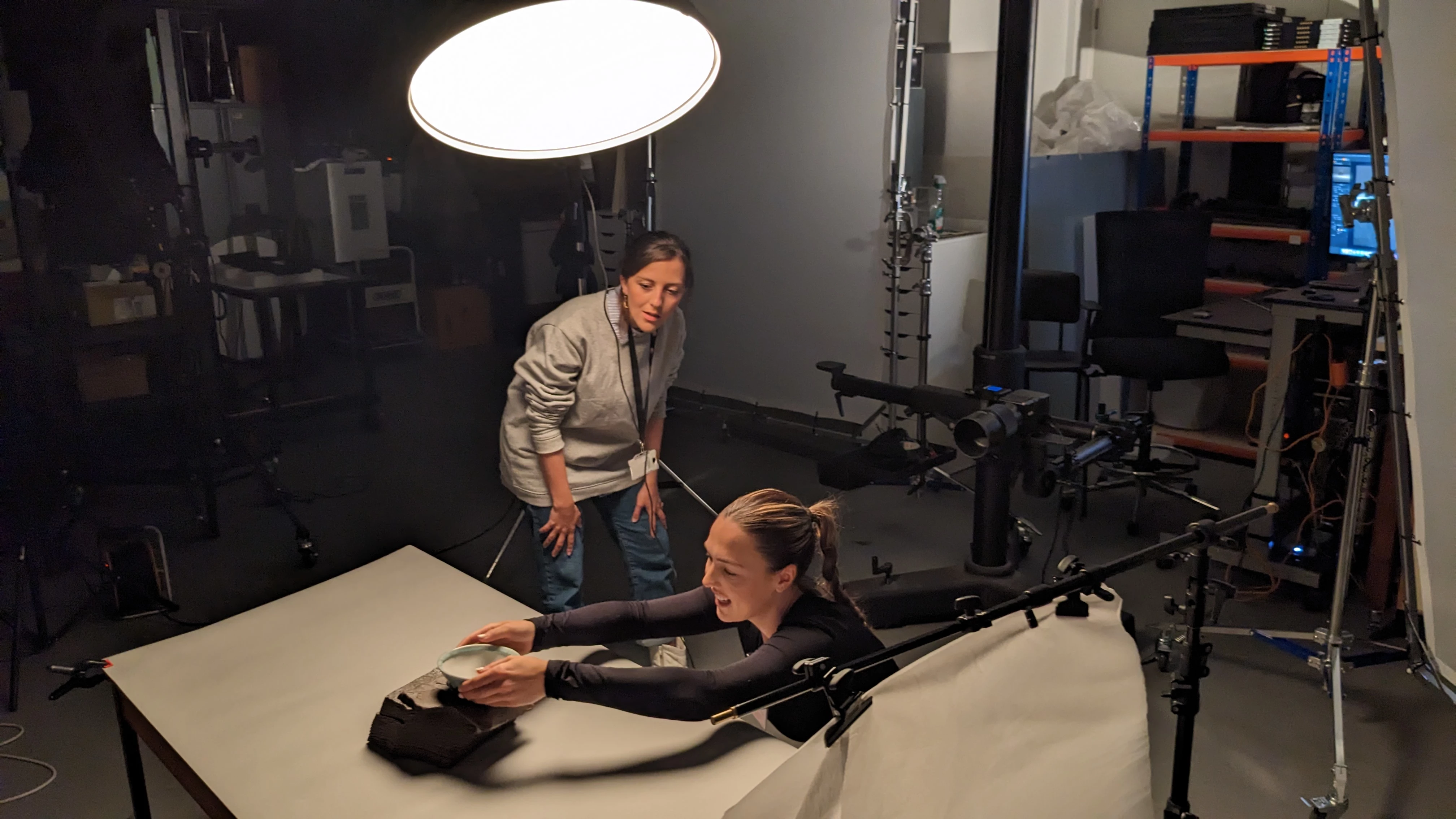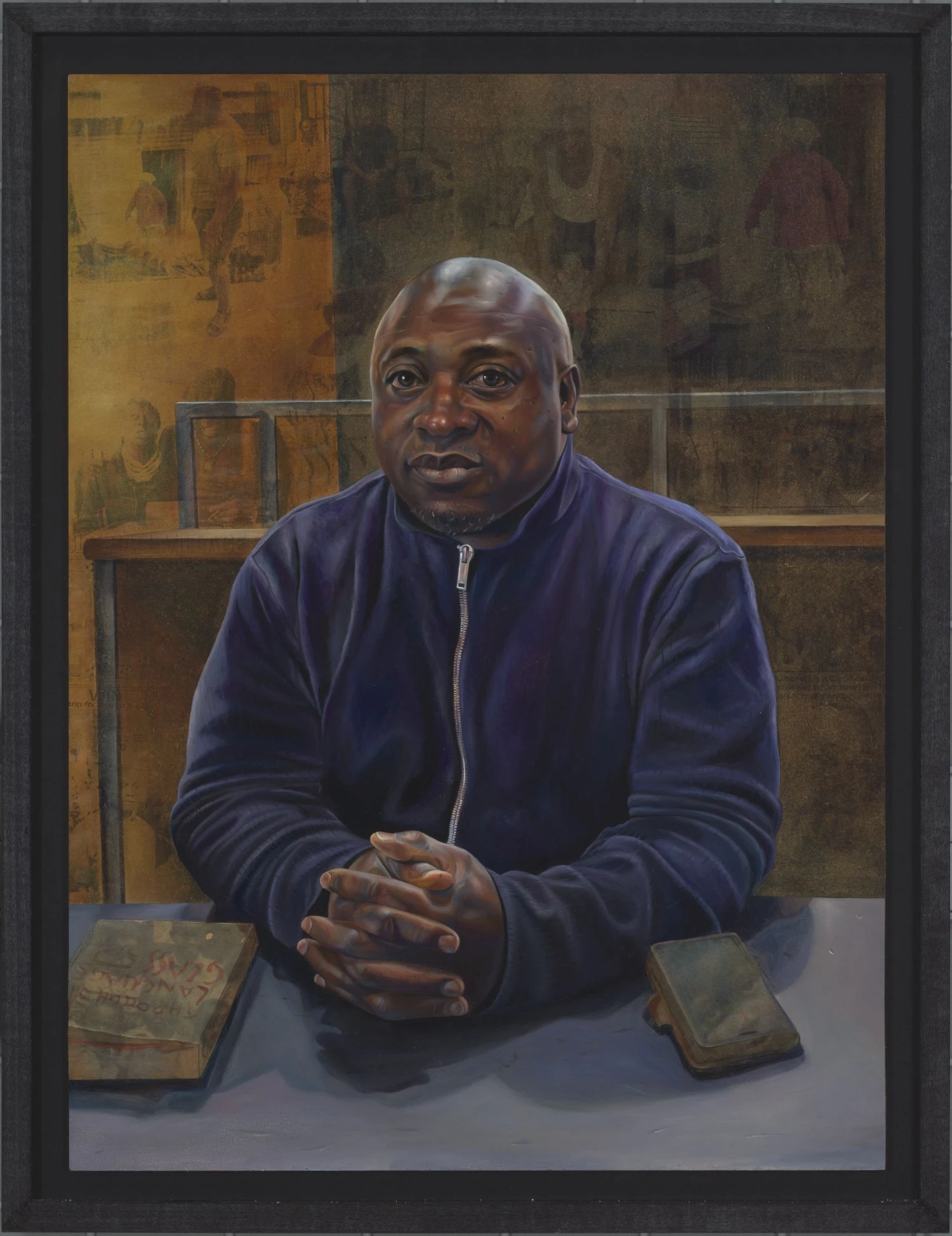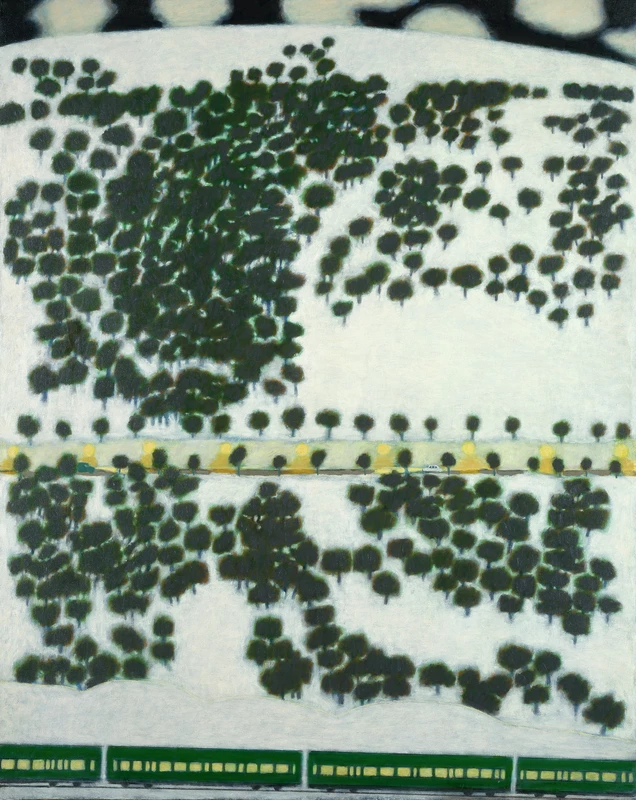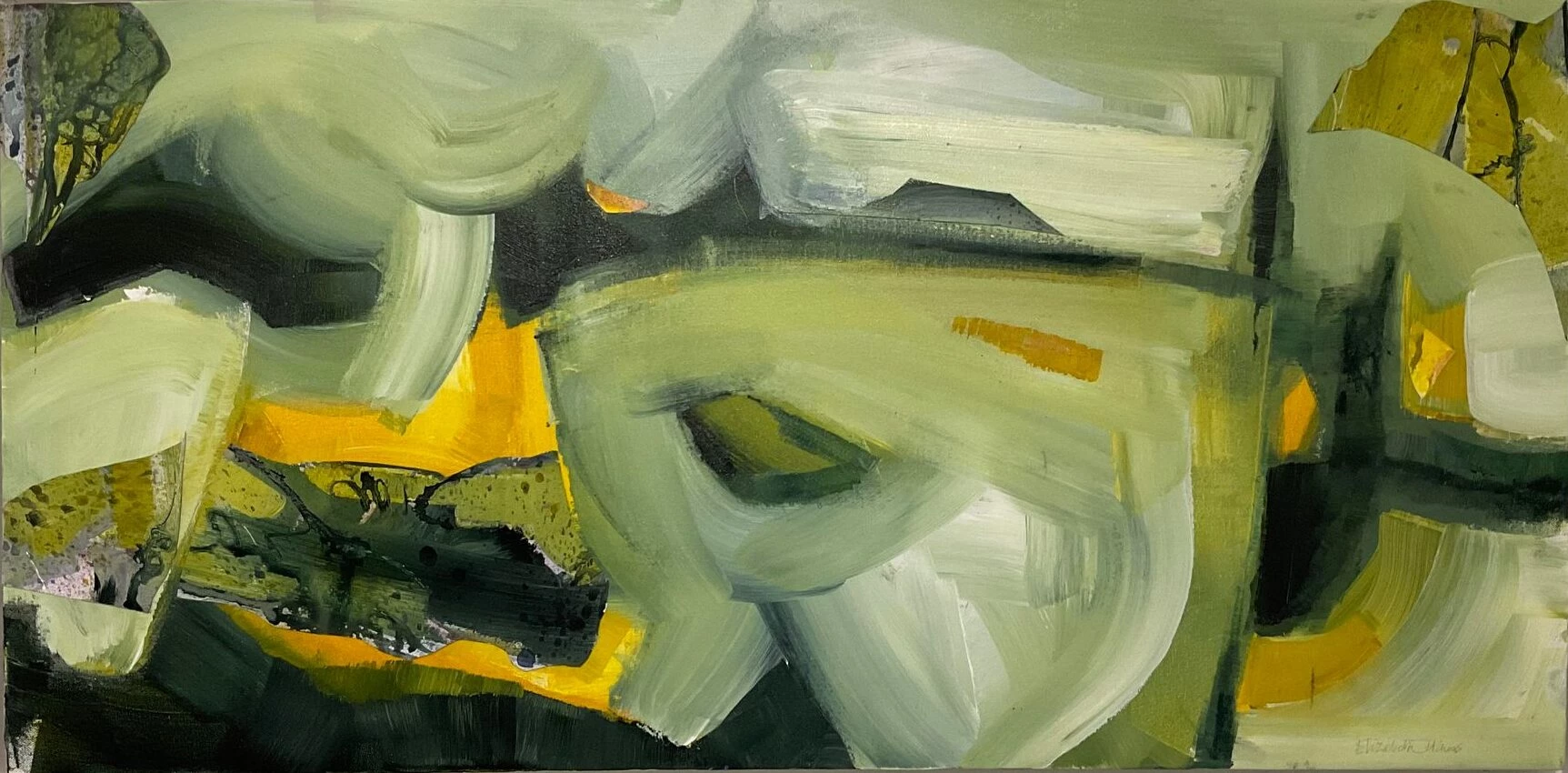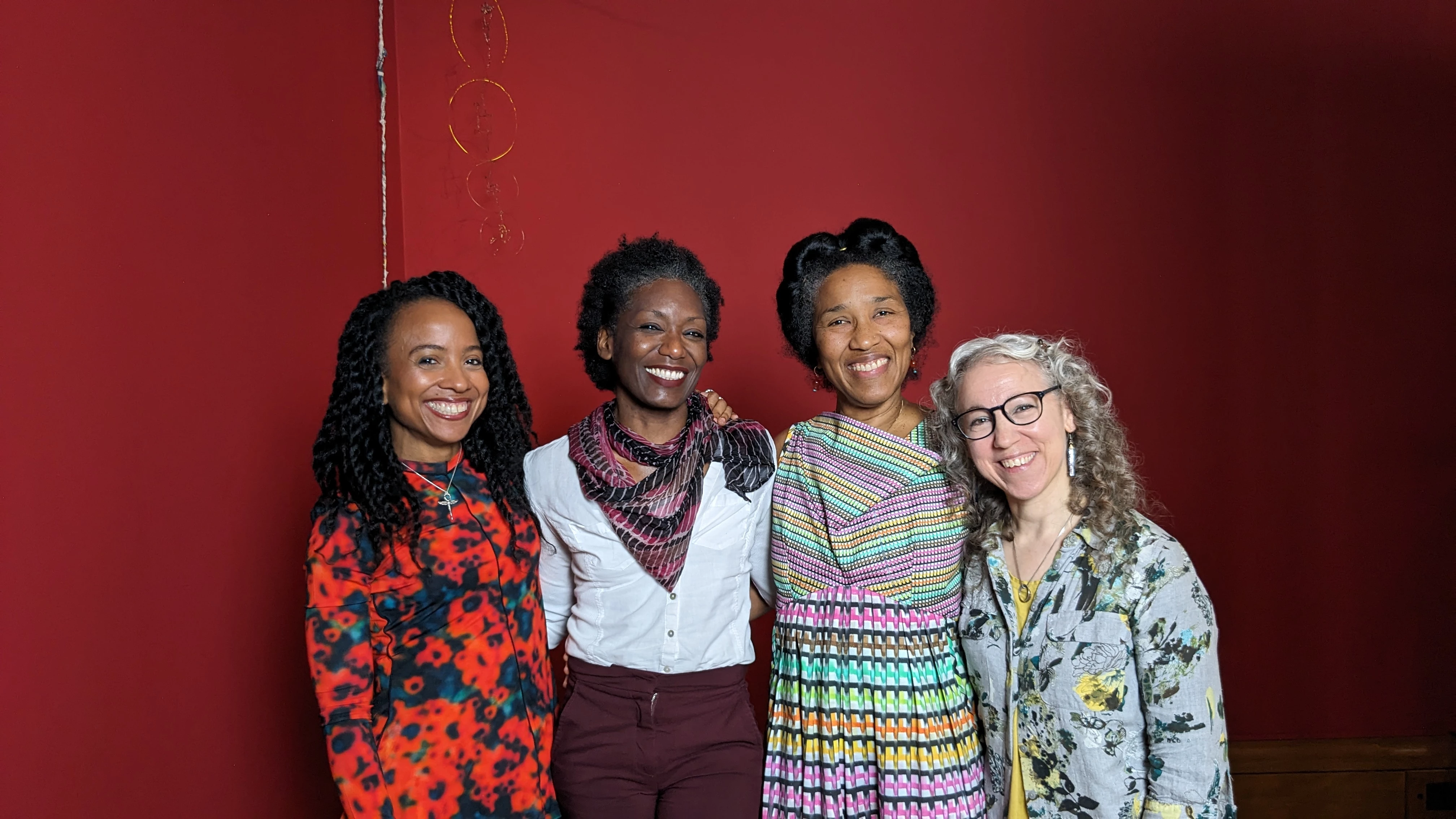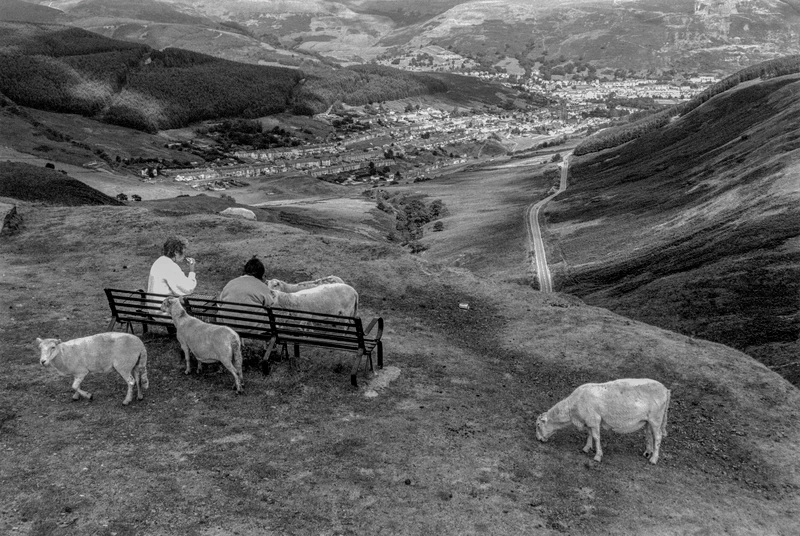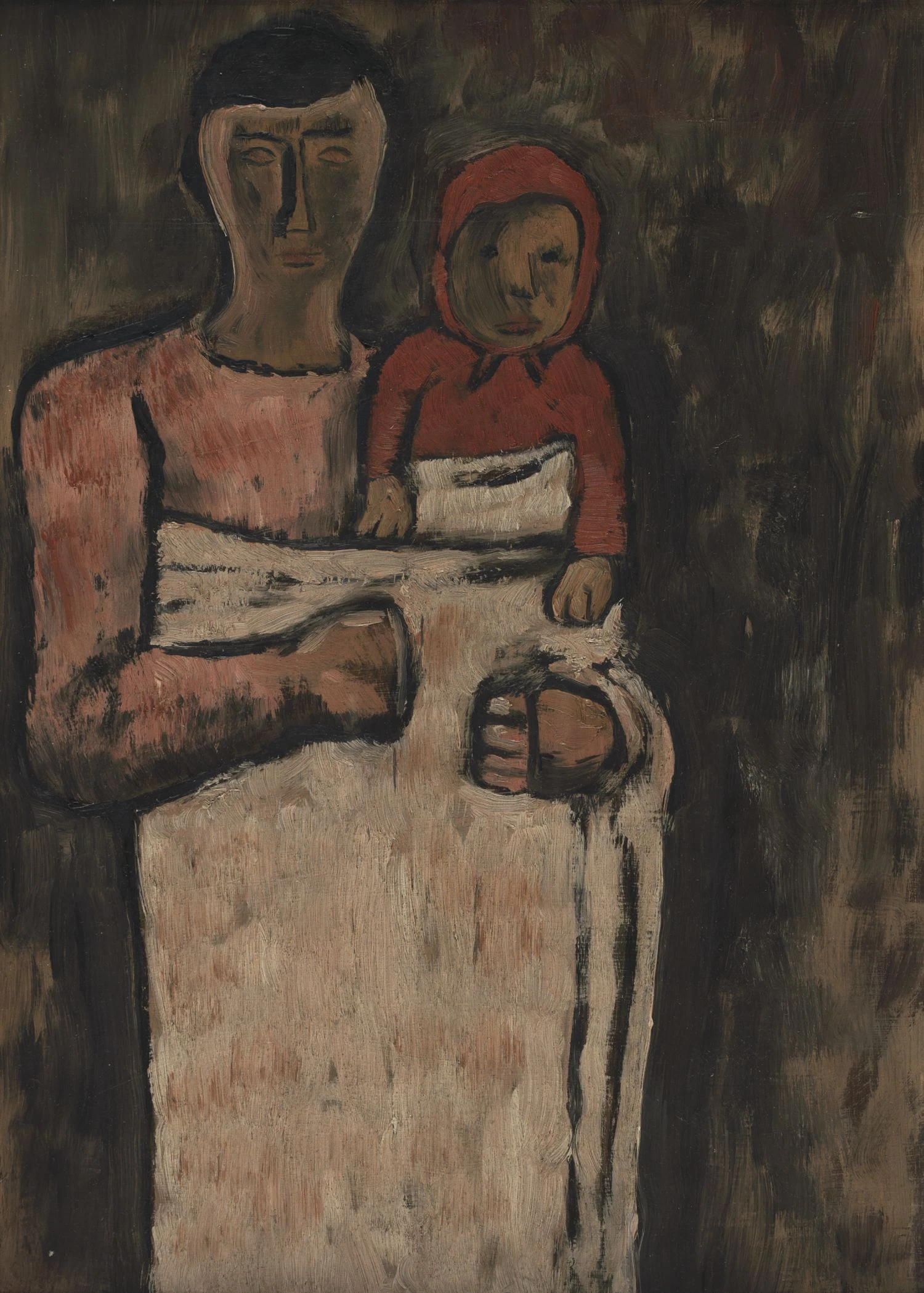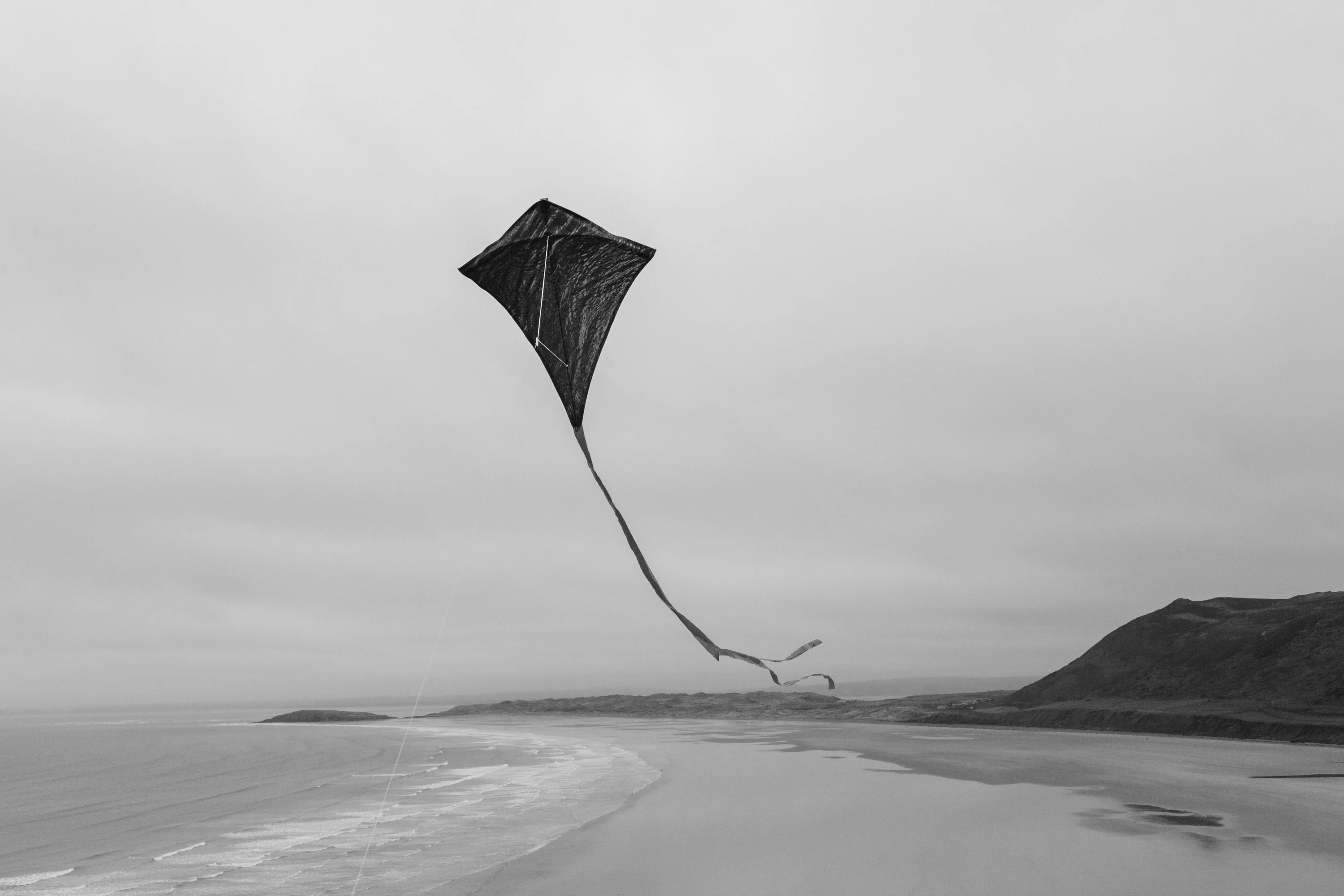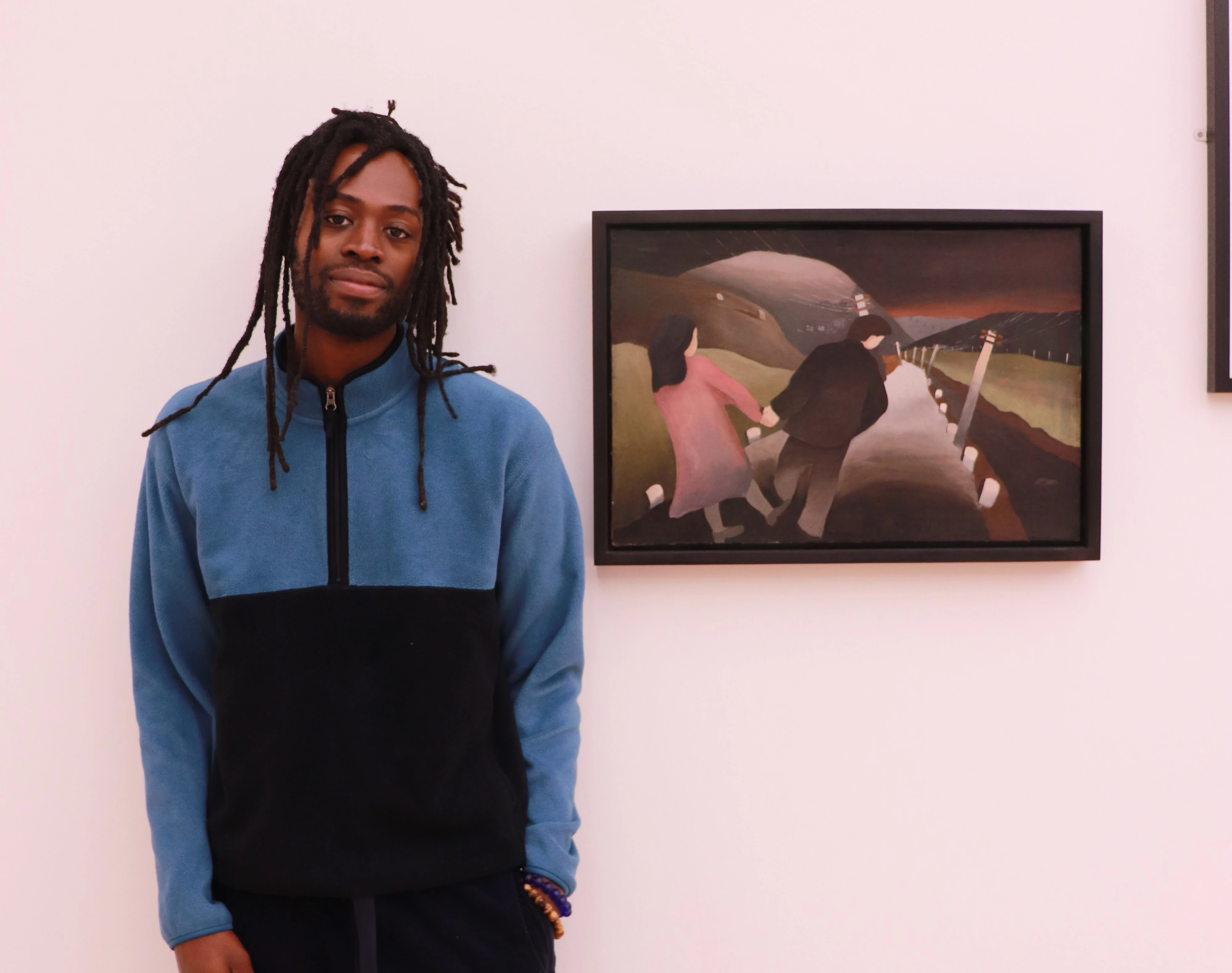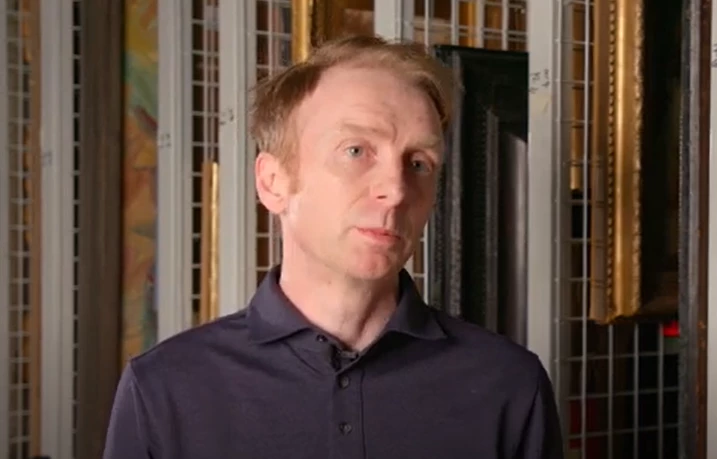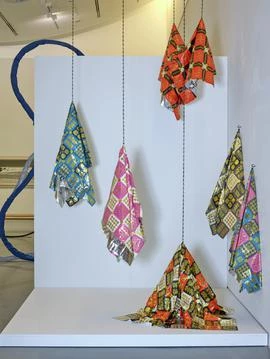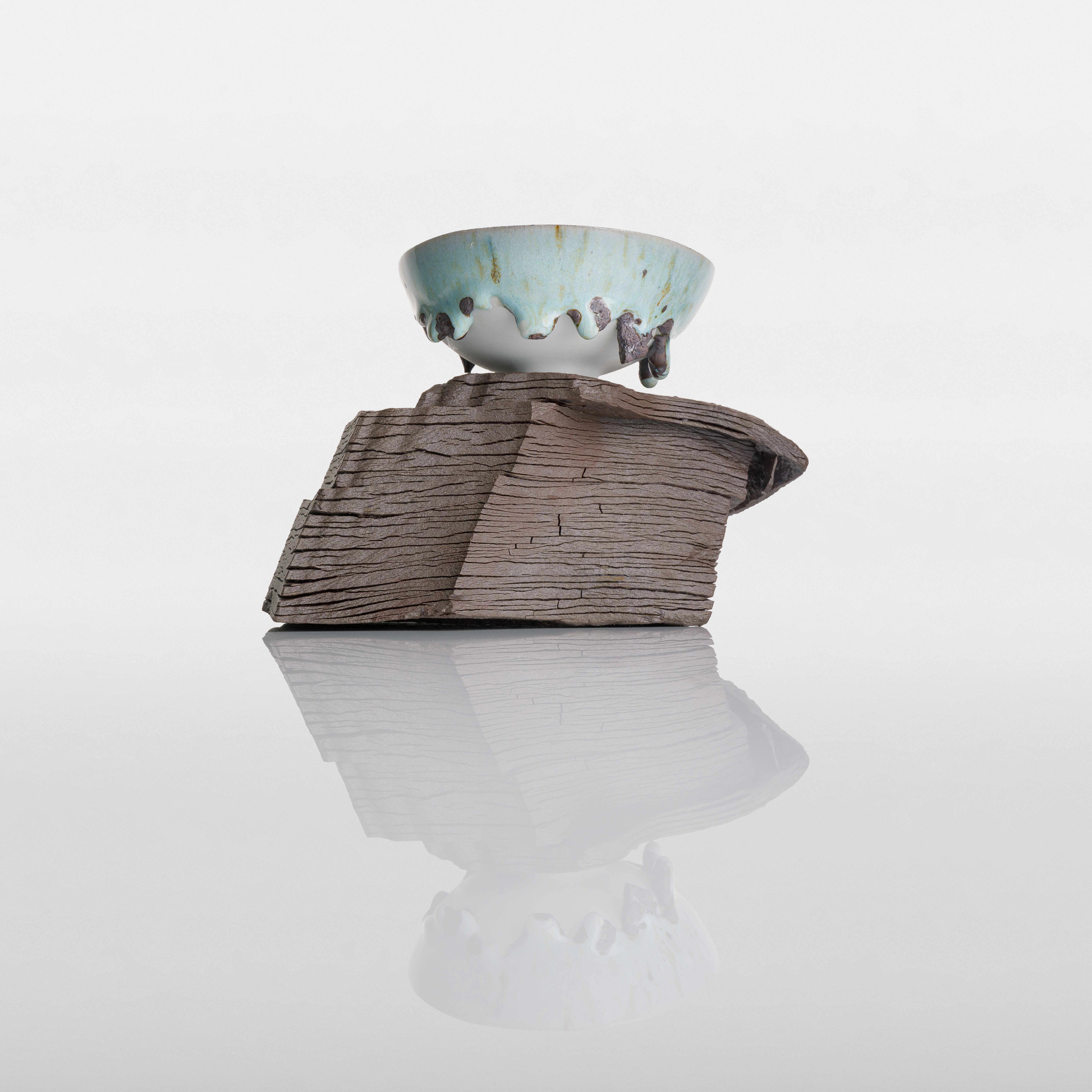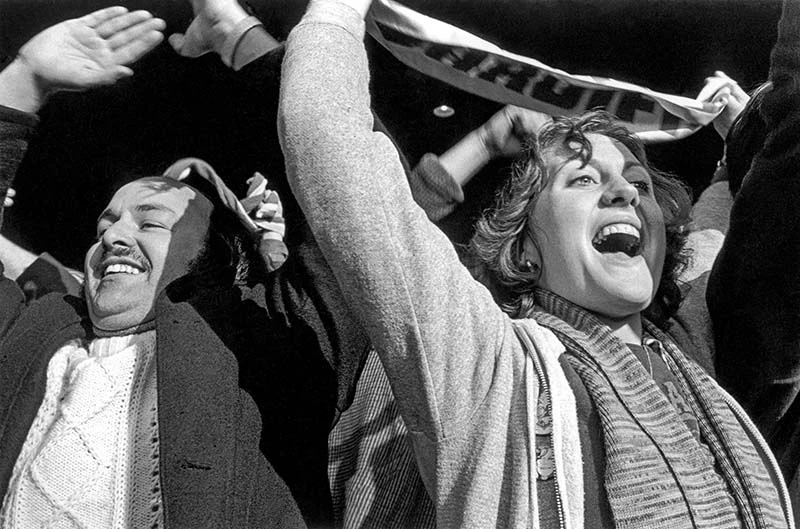The notion of Welsh identity is something that is discussed in all senses on an almost daily basis, the idea of ‘Welsh-ness’ is not only tied up in nostalgia and tradition, but in modern everyday values.
This Resource looks at the theme of Wales & Welsh Relevance and asks the question: what does it mean to be Welsh? Below you will find 10 artworks which appear within this theme, use them to discuss the idea of Welsh identity.
Bedwyr Williams – Bard Attitude
The artist is pictured in a dramatic landscape, a harp perched precariously on a rocky outcrop above a river. His robes and fake white beard blow in the breeze. Williams draws on Philip James de Loutherbourg (1740-1812) and his iconic image of The Bard in a playful comment on constructions of Welsh identity and history.
What in this image says ‘Welsh’ to you?
Does a bard represent Welsh identity?
Re-create a classic painting in photographic form.
Laura Ford – Glory Glory (Hat & Horns)
An imposing figure wears elements of traditional Welsh dress. Yet on closer inspection, the sculpture takes on the fantastical appearance of a character from a fairy-tale, or a nightmare. Part of a wider series created for the 2005 Venice Biennale, 'Glory Glory' explores the contradictory conceptions of national identity.
Which clothes represent Wales or Welsh identity?
Which fairy tales do you think about when it comes to Wales?
Create your own take on Welsh traditional dress.
Brenda Chamberlain – Self portrait on Garnedd Dafydd
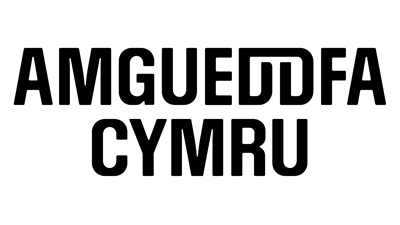
Brenda Chamberlain was a passionate writer and artist. At the time of painting this self-portrait, she had settled in the mountains of north Wales in pursuit of a quiet and creative life. This carefully constructed image shows a purposeful and strong-minded woman, determined to make her way as an artist. Both the assertive front-facing pose and the misty landscape background are derived from Renaissance paintings.
Why does Chamberlain use this background?
What can this image tell us about Chamberlain’s ‘Cynefin’?
What about your local area makes you feel Welsh?
Create your own traditional selfie or self-portrait.
Clé
mentine Schneidermann - It's Called Fashion (Look It Up), Merthyr
This photograph offers a thought-provoking and tender portrayal of identity, community and childhood. Since 2015, Clémentine Schneidermann and Charlotte James have worked in collaboration with youth groups across the South Wales Valleys to create the project ‘It’s Called Ffasiwn’. The shared sense of authorship produces a rich dialogue between artist, subject and place.
Why do you think the young girls are dressed this way?
How does this work make you feel?
How do the people portrayed represent Welsh identity?
Create a scene depicting yourself as an adult, or if an adult – as a child?
David Hurn - Coach party from the valleys on holiday during the fortnight close down of the pits. Aberavon, Wales

The Miners’ Fortnight took place across the last week of July and the first week of August when the coal mines were closed for annual maintenance. Miners, their families and whole communities from the South Wales Valleys flocked to resorts such as Barry and Porthcawl to enjoy a well-earned holiday.
What does the word community mean to you?
Is this scene unique to Wales?
Where in Wales do you associate with holidays?
Kyffin Williams - Snow on Siabod

Moel Siabod is a mountain near Capel Curig in Eryri (Snowdonia). Although Kyffin Williams was living in London when he painted this work, he regularly returned to his family home in Llansadwrn, Ynys Mon to paint the north Wales landscape. Williams forged a high profile in Wales during his lifetime and his paintings of Eryri have become synonymous with a popular and romanticized view of the Welsh landscape.
Are landscapes part of the identity of Wales?
What mood does this piece portray?
Where is your happy place in Wales? Create a piece of art depicting this place – it can be done in any form
Catrin Howell – Cŵn Gwyllt
Two wild dogs climb on top of each other as they try to escape the rising blue-green water of the sea. This is a reference to the legend of Cantre'r Gwaelod, a kingdom flooded by the waters of Cardigan Bay. The artist has captured the untamed spirit of the animals, which seem to be helping and not fighting each other.
Which Welsh myth or legend is your favourite and why?
Which animal best represents Wales?
What does this sculpture remind you of when thinking of Wales?
Paul Davies – Mappa Mundi
In this drawing Paul Davies brings together representations of his major land art works. He worked with local communities on proposals to create giant maps in the landscape constructed from earthworks and planting. This drawing includes designs for a Map of Wales in Ynys Mon (1987) and an unrealised World Map for Merthyr Tydfil (1989).
How do you think Wales is viewed on the world stage?
How does nature draw into the subject of Welsh identity?
How do you think Wales is viewed when seen on a word map?
Daniel Trivedy - Welsh Emergency Blankets
Seven foil emergency blankets are overprinted with traditional designs from Welsh blankets. This work was made in the same year the Welsh Government stated their ambition to be a Nation of Sanctuary. The installation contrasts the functional utility of the thin, foil blanket with the heritage, culture and security of the traditional Welsh blanket. It encourages us to consider the opportunities of being an inclusive and welcoming nation.
What does this work say to us about Wales today?
How does the piece make you feel?
Why has Trivedy used emergency blankets for this piece?
Mary Lloyd Jones – Ysgwrn
Mary Lloyd Jones is a painter who uses abstraction to explore landscape through memory, culture and identity. Her work expresses the Welsh idea of cynefin – a sense of belonging and attachment to a particular place. Yr Ysgwrn is named after the farm where the poet Hedd Wyn (1887-1917) grew up prior to being killed in the First World War. He was posthumously awarded the Chair at the 1917 National Eisteddfod.
Which events in Welsh history do you think add to the feeling of Welsh identity?
Which colours represent the landscapes of Wales?
Activities:
- Find art in your local area that reflects Welsh identity – it can be anything already in place or a piece that you create inspired by your local area (remember art can be anything drawn, painted, sculpted, photographed etc. You have a blank canvas).
- If you had the ability to place this piece of art anywhere in your community where would it go?
Age range
We have purposely created exercises that are not aimed at a particular level as we believe in teachers’ professional judgement; you can adapt activities to suit any group, through all stages of primary, secondary and adult learning.
Humanities:
Enquiry, exploration and investigation inspire curiosity about the world, its past, present and future.
Outcomes:
This resource aims to open up conversations on what it means to be Welsh and get learners to discuss what Wales means to them through the lens of art.
By using this resource in a group setting it will encourage learners to express and discuss opinions, whilst working both individually and in groups to react creatively to various artworks in the collection, using teamwork and individual creativity.
Activities:
- Find art in your local area that reflects Welsh identity – it can be anything already in place or a piece that you create inspired by your local area (remember art can be anything drawn, painted, sculpted, photographed etc. You have a blank canvas).
- If you had the ability to place this piece of art anywhere in your community where would it go?
